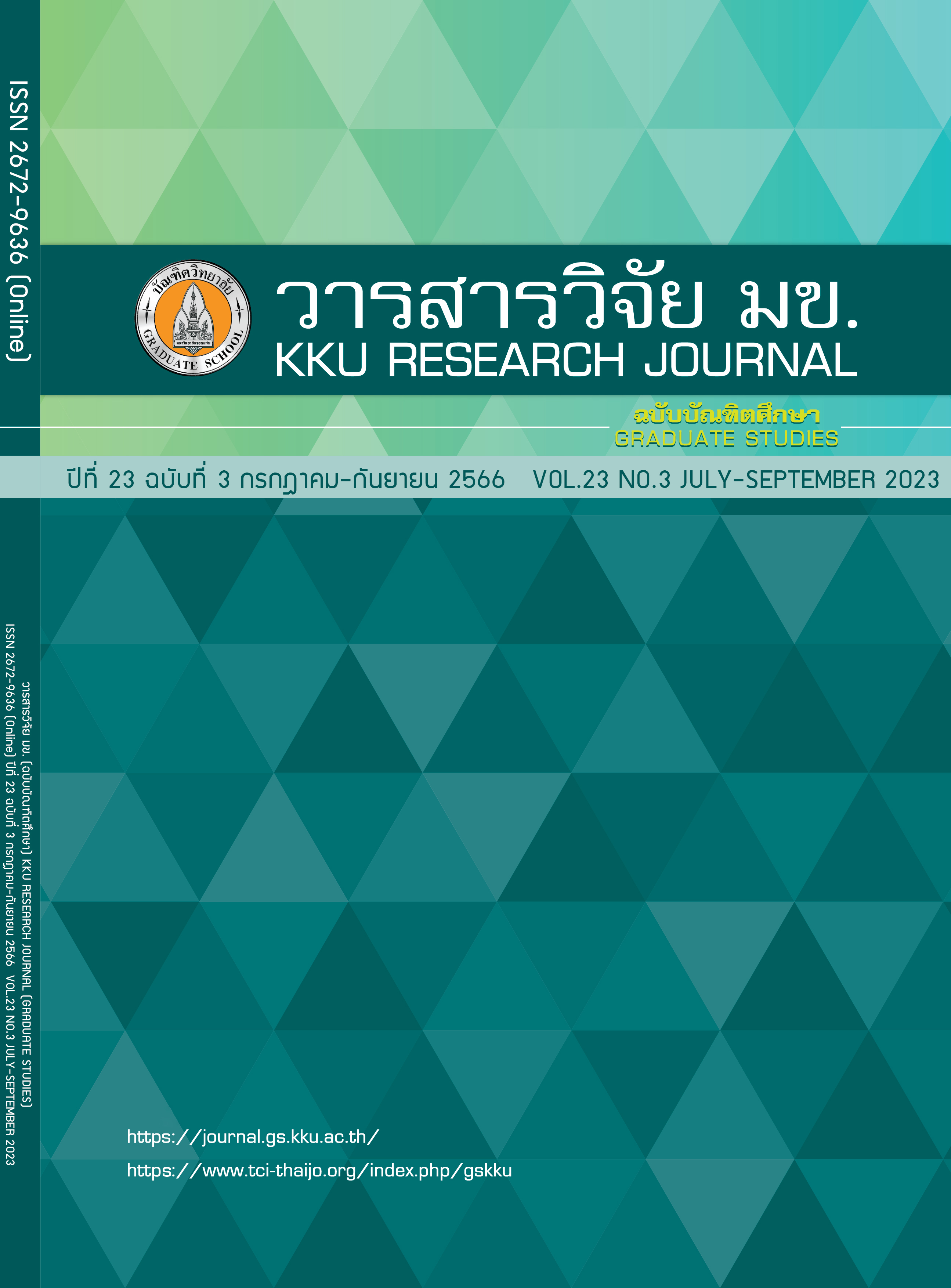Sensitivity Analysis of SWAT Model Parameters: A Case Study of the Lower Areas of the Lam Pao Dam
Keywords:
Hydrological model, Parameter sensitivity analysis, Surface runoffAbstract
The purpose of this study was to analyze the sensitivity of SWAT model parameters affecting runoff for the lower areas of the Lam Pao Dam. Since the study area is a midstream catchment, its runoff is influenced by rains and also the upstream runoff. Thus, analysis of the model parameters is essential. The analysis was performed by using the SWAT-CUP program. The results showed that ALPHA_BNK, CH_K2, CH_N2, ESCO, and REVAPMN were the most sensitive to the simulated runoff outcomes because their p-values were lower than 0.1 and the absolute values of t-stat were the top five values of the analysis. Moreover, the runoff simulates of SWAT model were acceptable because the values of R2, NSE, and PBIAS during the year 2008-2017 were 0.71, 0.75, and 3.85%, respectively. This study provides guidelines on hydrological modeling in runoff estimation.
References
Lohpaisankrit W, Prasanchum H. Catchment-scale flood hazard mapping in the lower areas of Lam Pao River basin, Thailand. Eng. Access. 2022; 8(1): 53–60.
Arnold JG, Srinivasan R, Muttiah RS, Williams JR. Large area hydrologic modeling and assessment part I: Model development. J Am Water Resources Assoc. 1998; 34(1): 73–89.
Arnold JG, Fohrer N. SWAT2000: current capabilities and research opportunities in applied watershed modelling. Hydrol. Process. 2005; 19(3): 563–572.
Brighenti TM, Bonumá NB, Grison F, Mota AdA, Kobiyama M, Chaffe PLB. Two calibration methods for modeling streamflow and suspended sediment with the SWAT model. Ecol. Eng. 2019; 127: 103–113.
Worqlul AW, Ayana EK, Yen H, Jeong J, MacAlister C, Taylor R, et al. Evaluating hydrologic responses to soil characteristics using SWAT model in a paired-watersheds in the Upper Blue Nile basin. CATENA. 2018; 163: 332–341.
Abbaspour KC. SWAT-CUP: SWAT calibration and uncertainty programs - A user manual. EAWAG: Swiss Federal Institute of Aquatic Science and Technology; 2015.
Narula KK, Nischal S. Hydrological modelling of small gauged and ungauged mountainous watersheds using SWAT: a case of Western Ghats in India. J. Water Resour. Prot. 2021; 13(7): 455–477.
Land Development Department. 62 soil groups [Internet]. 2010 [updated 2010 Mar 22; cited 2022 Jul 5]. Available from: https://www.ldd.go.th/thaisoils_museum/62_soilgroup/main_62soilgroup.htm. Thai.
Khalid K, Ali MF, Rahman NFA, Mispan MR, Haron SH, Othman Z, et al. Sensitivity analysis in watershed model using SUFI-2 algorithm. Procedia Eng. 2016; 162: 441–447.
Me W, Abell JM, Hamilton DP. Effects of hydrologic conditions on SWAT model performance and parameter sensitivity for a small, mixed land use catchment in New Zealand. Hydrol. Earth Syst. Sci. 2015; 19(10): 4127–4147.
Moriasi DN, Gitau MW, Pai N, Daggupati P. Hydrologic and water quality models: performance measures and evaluation criteria. Trans. ASABE. 2015; 58(6): 1763–1785.
Phiri WK, Vanzo D, Banda K, Nyirenda E, Nyambe IA. A pseudo-reservoir concept in SWAT model for the simulation of an alluvial floodplain in a complex tropical river basin. J. Hydrol. Reg. Stud. 2021; 33: 1000770.
Alim N, Tarigan SD, Tejo Baskoro DP, Wahjunie ED. Parameter sensitivity test of SWAT hydrological model on two different resolutions (a case study of upper Cisadane subbasin, West Java). J. Trop. Soils. 2018; 23(1): 47–53.
Downloads
Published
Issue
Section
License
Copyright (c) 2023 KKU Research Journal (Graduate Studies)

This work is licensed under a Creative Commons Attribution-NonCommercial-NoDerivatives 4.0 International License.



